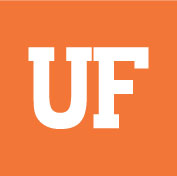Background
According to Morse and Woods (2019) student learning outcomes (SLOs) are “expected behaviors, characteristics, and attributes that students exhibit as a result of a program, service, resource, or activity. SLOs include things educators [and student affairs practitioners] expect students to know, be, or do as a result of a particular set of intentionally designed, clearly articulated learning activities.” Learning outcomes therefore become the parameters for assessment. They provide direction for what to assess and, by extension, are instrumental in determining the effectiveness of a given program.
Writing Outcomes
Similarly, when writing learning outcomes, assessment should be at the forefront of the mind. What is most important to know from the program or process you will be assessing? What theory, prior research, or experience guides you? Specificity and clarity are crucial for writing outcomes that are of appropriate scope. A second key feature of effective learning outcomes is that they are clearly measurable (Bresciani, 2001). How will you know when an outcome has been achieved completely? For this reason, it is best that outcomes are observable behaviors as opposed to internal traits or knowledge. Finally, learning outcomes should measure meaningful behaviors that reflect positively on your program or process (Bresciani, 2001). This type of objective helps to support the program by demonstrating the benefits for students.
Important Acronyms for Writing Outcomes (“Workshops,” 2020)
Are your outcomes SMART?
S = Specific
M = Measurable
A = Attainable
R = Relevant
T = Time-bound
Remember your “ACBD”s
A= Audience – Who will attend/take part in your program or process? Who will perform the action?
C= Condition – Under what conditions will the audience perform the action? (For example, at the end of the session, at the end of the semester, after attending three sessions, etc.?)
B = Behavior – What is the action that the learner will accomplish? Remember, these should be observable and measurable! Use the active voice “______ will _________”
D = Degree – To what extent will the behavior be expected to occur? For example, 100% of the time, half of the terms, complete an action successfully, create 5 goals, etc.
The following question prompts may be helpful to ensure that your outcomes capture the ACBDs:
• Who?
• After doing what?
• Will be able to?
• As demonstrated by?
• To what degree?
• (Optional – Program and/or administrative outcome?)
Examples:
Who? DSA professionals
After doing what? Attending the SLO workshop
Will be able to? Will be able to write a student learning outcome
As demonstrated by? During the activity section of the workshop.
Program outcome? The goal for all participants is to write an outcome
To what degree? containing all components.
Bloom’s Taxonomy, which classifies various objectives and skills often used by educators,
is another tool that can be helpful when writing SLOs. This chart provides a list of active verbs and sorts them according to the level of critical thinking necessary for completing the action. Although the more complex actions under “Synthesis” or “Evaluation” are more difficult to complete, they typically result in greater internalization, making it more likely that your students will remember and utilize the information or actions. Your audience and program provide useful information about the complexity of your SLOs.
How many?
It is best to focus on a few well-written SLOs that assess the most important takeaways from a process, program, or initiative, rather than many SLOs that may cause a loss of focus. Three is often the magic number, although this may vary slightly depending on the structure of the program.
Once you are more familiar with the mechanics of writing SLOs, the ALOI Cycle may be helpful to provide an iterative structure for generating the strongest SLOs for a given program or intervention.
From Makela and Rooney, 2012:
Assessment of Learning Outcomes for Interventions (ALOI) Cycle
1. Defining context – Describe the career intervention of interest, intended student groups, and primary stakeholders. Draw connections to relevant mission statements.
2. Brainstorming outcomes – Brainstorm possible learning outcomes, considering what students will be able to know, do, demonstrate, value, or feel following the career intervention. What difference will the intervention make?
3. Writing outcomes statements – Transform brainstormed outcomes into learning outcomes statements that can be assessed.
4. Connecting theories and professional standards – Connect career interventions and learning outcomes statements to relevant theories and professional standards. Make additions and changes as necessary.
5. Prioritizing learning outcomes – Prioritize a limited number of learning outcomes to assess. Reserve other learning outcomes for future assessment projects.
6. Evaluating learning outcomes – Explore evaluation tools that are well-suited to assessing your learning outcomes statements. Consider possible data sources and available evaluation skills and expertise. Address ethical considerations. Carry out data collection and analysis.
7. Reflecting on results and process – Interpret results of data analysis and the assessment process, welcoming insights from a variety of stakeholders.
8. Using learning outcomes assessment – Determine uses of results, considering what will be communicated for advocacy, what will be modified or adapted, what will be discontinued, and what will be explored further in future assessments. Clearly define and implement next steps.
